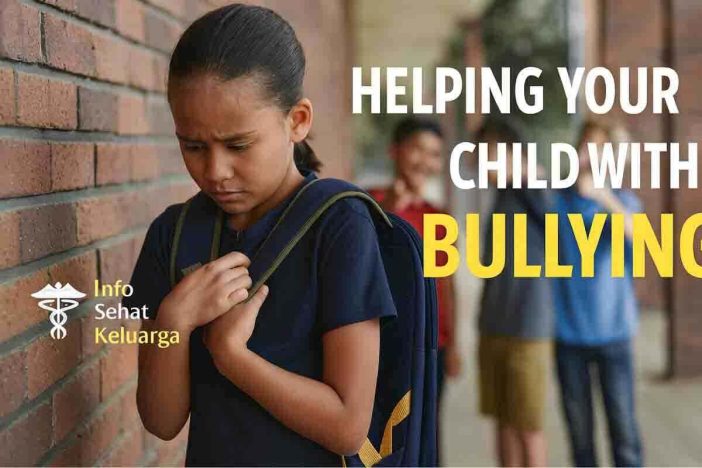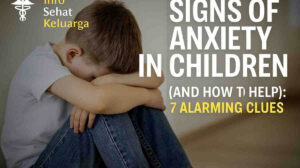
On a gray Wednesday afternoon, sunlight filtered weakly through the school’s tall windows. In the corner of the playground, little Maya clutched the straps of her backpack, shoulders curled inward like a wounded bird. Her eyes, wide and wary, flicked toward the cluster of laughing boys, their voices sharp with laughter that had sliced through her confidence. Every word they tossed felt like a stone, lodged in her little chest.
This is the world too many children navigate—one where Helping Your Child Cope with Bullying becomes not just guidance, but a lifeline. You see it in the tremor of a voice describing whispered taunts at home, in the hesitantly dropped “I’m fine”—spoken without conviction. As parents, teachers, and caregivers, we ache to protect them. And yet, discomfort or uncertainty can leave us standing helpless at the fringe.
That’s why this article exists: to bring you into Maya’s world—not as a distant observer, but as an ally armed with compassion, insight, and practical steps. Through research, real-world data, and actionable strategies, we’ll explore how to move your child from fear to resilience.
How Widespread Is Bullying?
According to UNICEF’s global reports, nearly 1 in 3 students aged 11 to 15 has experienced bullying at least once in the past month. In the United States, the National Center for Education Statistics (2024) found that 22% of students ages 12–18 reported being bullied at school. Online, the problem has grown sharper: Pew Research Center noted that 59% of U.S. teens have faced some form of cyberbullying.
The numbers are sobering, but they are not destiny. Recognizing the scale of the problem is the first step in learning how to intervene effectively. Parents who act early can change not just how a child responds to bullying but also how long its scars last.
Digital bullying, or cyberbullying, is rising fast, especially as children spend more time online. Insights from our article on mental health in the digital era show how constant exposure to online stress can significantly affect a child’s well-being.
The Emotional and Physical Toll
Bullying isn’t just “kids being kids.” It has measurable effects:
- Children who are bullied are twice as likely to experience symptoms of depression and anxiety.
- Long-term studies reveal that bullied children face an increased risk of leaving school early, avoiding social situations, or struggling with career confidence later in life.
- A 2023 study in the Journal of Child Psychology and Psychiatry found that bullying can disrupt sleep, trigger headaches, and even cause long-term stress responses in the brain.
This is where emotional resilience comes in. The ability to rebuild self-confidence and find a supportive network can protect children from long-term damage. For parents, the mission is not only to stop the bullying but also to rebuild self-esteem support at home.
Proven Strategies to Helping Your Child Cope with Bullying
1. Validate Their Feelings (Don’t Minimize)
When your child shares their experience, avoid phrases like “just ignore it.” Instead, say:
“That sounds very painful. I’m glad you told me.”
Validation shows you’re listening. Research shows that children who feel heard are more likely to open up again—and that openness is the first defense against ongoing harm.
2. Teach Assertive (Not Aggressive) Responses
Role-play simple, strong phrases such as:
- “Stop. That’s not okay.”
- “Leave me alone.”
Pairing words with a confident posture (eye contact, standing tall) can shift the power dynamic. Child development specialists refer to this as trusted-adult connection in action—building a bridge between communication and confidence.
3. Build a Circle of Trust
Encourage your child to identify at least one trusted adult at school—a teacher, counselor, or coach. This trusted-adult connection ensures that your child never feels alone. Schools with buddy systems and adult allies report up to a 30% decrease in repeat bullying incidents.
4. Strengthen Resilience at Home
Small rituals matter:
- Daily affirmations (“I am strong, I am worthy”).
- Journaling feelings.
- A “victory wall” where achievements—like speaking up—are celebrated.
Each step teaches children that their worth is not defined by others’ words.
5. Empower Peer Support
Research by the Anti-Bullying Alliance shows that when peers intervene, bullying stops within 10 seconds in more than half of cases. Teaching your child how to seek allies—and to be one—creates a ripple of protection in the schoolyard.
6. Collaborate With Schools
Set up meetings with teachers or principals. Ask about:
- Anti-bullying policies.
- Safe reporting mechanisms.
- Peer-support initiatives.
Document incidents. Consistent records increase accountability and ensure your child’s voice is heard.
7. Know When to Seek Professional Help
Warning signs include:
- Frequent stomachaches or headaches.
- Nightmares or bedwetting.
- Withdrawn behavior, avoiding social interactions.
Don’t hesitate to consult a child psychologist or counselor. Seeking help isn’t weakness—it’s the strongest step you can take.
A Family’s Role in Healing
Families are anchors. Weekly family check-ins where every member shares a “high” and “low” can normalize honest conversations. Creating safe spaces at home teaches children that their voices matter.
By modeling calm, confident responses to conflict at home, you show your child that strength is not silence—it is action guided by empathy.
When Silence Becomes Dangerous
Research has found that children who don’t share bullying experiences with parents often struggle longer. One study showed that 60% of bullying cases go unreported because children fear making things worse. That’s why building trust and keeping communication lines open is essential.
Bottom Line: Turning Fear Into Strength
Helping Your Child Cope with Bullying is more than stopping hurtful words or actions—it’s about empowering children to reclaim their self-worth. By validating feelings, building resilience, and collaborating with schools and professionals, you don’t just shield your child from harm—you give them the tools to thrive.
Every step you take writes a new story: one where your child walks into school with their head held high, knowing they are seen, supported, and never alone.


